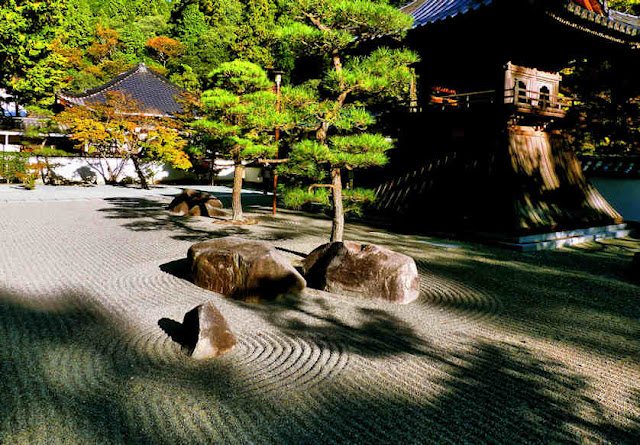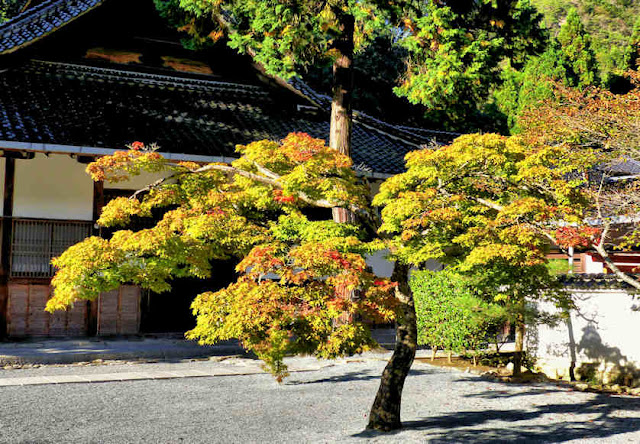Jyoei-ji Temple in Yamaguchi City is a Rinzai temple more commonly known as Sesshuteien after the garden designed by Sesshu within its grounds.
A statue of Sesshu, one of the most important artists and garden designers in Japanese history as well as being a zen monk, stands at the entrance to the temple.
On the approach you pass through Muin, a wide, fairly simple garden created in 2012. photos above and below. This is the first of 4 gardens at the temple.
None of the current buildings are very old, but it is quite a big temple with many smaller halls within the grounds.
The temple also has some nice art...
However, the main focus of the temple is the huge garden to the rear which is the biggest garden designed by Sesshu and said to be based on one of his landscape paintings....
For this post I will concetrate on the garden in front of the main hall.
It was designed by Mirei Shigemori.
It is called Nanmeitei garden and was built in 1968.
There is a story that the head priest asked Shigemori to make a garden that was not so good so that it did not detract from the Sesshu Garden.
The garden uses the two gates as a backdrop.
Please enjoy these close-up shots of the garden.
The honzon of the temple is a Thousand-armed Kannon.
The final garden is a small karesansui garden using a reddish gravel rather than the usual white....
if you would like to subscribe by email, just leave your email address in the comments below. It will not be published or made public. I post new content almost every day, and send out an email about twice a month with short descriptions and links to the most recent posts.













































































